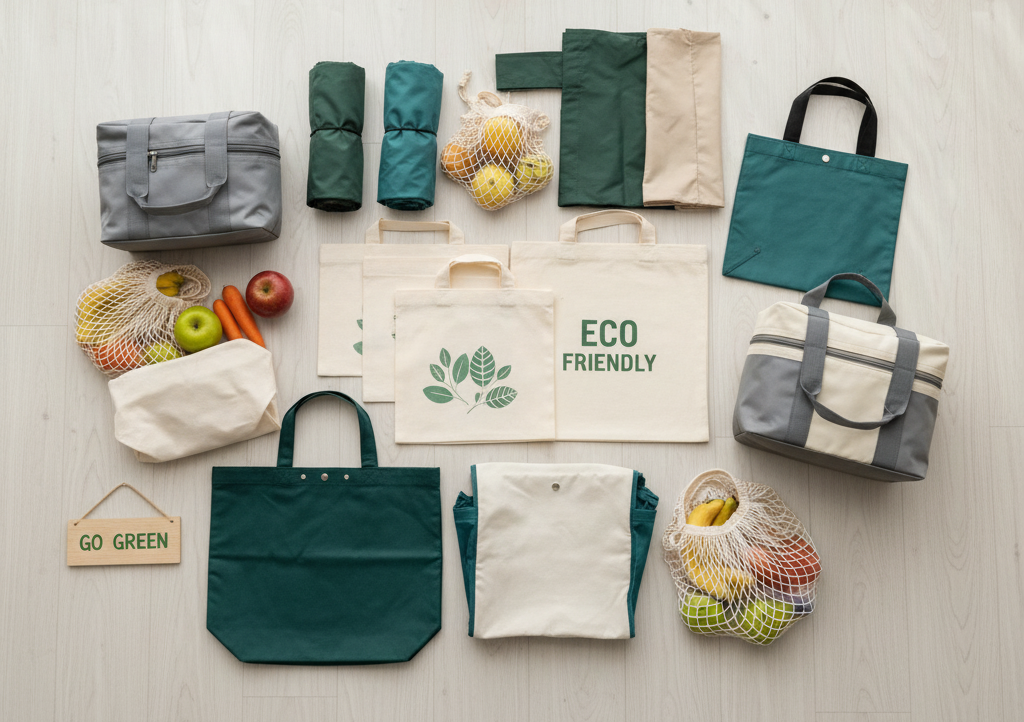Save money and go green with these 10 easy steps
The truth is, most people want to live greener but assume it’s expensive or complicated. And yes, some eco-friendly swaps cost money, but here’s the good news: many of the most effective changes are completely free. You don’t need a fancy compost bin or solar panels to start making a difference.
This guide will walk you through 10 easy ways to go green at home without spending a dime. Each habit is practical, beginner-friendly, and proven to reduce waste, conserve resources, and save you money. Along the way, I’ll highlight real-world examples, common mistakes to avoid, and a few trusted brands you can explore when you’re ready to level up your eco-living journey.
Did you know that the average household wastes nearly $200 a year on energy from devices left plugged in but not in use (U.S. Department of Energy)? Add to that the mountain of single-use plastics, food waste, and clothing turnover, and it’s no wonder many of us feel overwhelmed about where to start when it comes to sustainable living.
Why This Matters
Before we dive into the list, let’s set the stage. Why should we bother with these small eco-friendly habits?
-
Environmental Impact: Residential energy use contributes to about 20% of greenhouse gas emissions globally (IEA, 2023). Even minor reductions add up.
-
Financial Savings: Turning off unused devices, reusing containers, and cutting water waste can actually save households hundreds of dollars a year.
-
Long-Term Habits: These free steps form the foundation for more advanced sustainable living at home, like investing in energy-efficient appliances or switching to renewable energy when possible.
Think of these changes as planting seeds: small actions that grow into a lifestyle shift.
🌱 10 Easy Ways to Go Green at Home Without Spending a Dime
1. Turn Off Lights You’re Not Using
Lights left on unnecessarily waste energy and money.
One 60-watt bulb left on for 8 hours daily costs about $25 per year. Multiply that by multiple rooms and bulbs, and the costs and emissions grow.
Get into the habit of flipping the switch every time you leave a room. Better yet, place reminders on light switches for kids and teens.
Quick Tip:
Open curtains during the day for natural light, it’s healthier for your circadian rhythm and free.
When you’re ready to invest, consider energy-saving LED bulbs [Insert affiliate link].
2. Unplug Idle Devices
Many appliances continue to draw energy even when “off.” This is called phantom energy and several households have fallen prey to this phantom without even knowing simply because they built their lives around all kinds of household appliances and devices.
According to the U.S. Department of Energy, phantom loads can account for 5–10% of a home’s energy use. That’s money wasted on nothing.
Unplug chargers, coffee makers, TVs, and microwaves when not in use. A power strip can make this simple.
Quick Tip:
Create an “unplug station” for your electronics at night.
Upgrade later with a smart power strip [Insert affiliate link].
3. Wash Clothes in Cold Water
Hot water cycles use significantly more energy. Heating water accounts for nearly 90% of the energy used in washing machines (EPA).This is why you can find more detergents offering cold wash features or capabilities.
Choose cold water cycles for everyday laundry. It’s gentler on fabrics, keeps colors vibrant, and slashes your utility bill.
Quick Tip:
Reserve hot water only for heavily soiled loads.
For eco detergents, check out [Insert affiliate link].
4. Repurpose Glass Jars
Most jars end up in recycling, but many never make it through the full process.
Recycling contamination rates in North America hover around 25%, meaning much recyclable material is discarded instead.
Save jars from sauces, jams, and pickles. Use them as food storage, spice jars, pen holders, or even drinking glasses.
Quick Tip:
Label them with chalk pens for a clean, Pinterest-worthy pantry.
If you run out, try glass storage sets like [Insert affiliate link].
5. Start a Meatless Monday
Animal agriculture is resource-intensive, using vast amounts of water and land.
Skipping meat just one day a week can reduce your annual carbon footprint by 400 pounds (Earth Day Network).
Commit to a “Meatless Monday.” Try hearty lentil soups, bean tacos, or veggie stir-fries.
Quick Tip:
Batch-cook plant-based meals to save time.
Consider a plant-based cookbook like [Insert affiliate link].
6. Air-Dry Clothes
Dryers consume a huge amount of household electricity.
Air-drying just half of your laundry can save up to $100 annually in energy bills.
Hang clothes on a rack, line, or even the back of a chair. Bonus: fabrics last longer without dryer wear.
Quick Tip:
Shake clothes before hanging to reduce wrinkles.
Space-saving drying racks [Insert affiliate link].
7. Bring Your Own Bags
Plastic bags are used for minutes but last centuries.
Over 100 billion plastic bags are used annually in the U.S. alone, clogging waterways and harming wildlife.
Repurpose tote bags, backpacks, or baskets you already own. Keep one in your car or by the front door.
Quick Tip:
Dedicate a bag just for grocery runs.
Check out durable reusable totes [Insert affiliate link to reusable tote].
8. Save Water While Brushing
Running water while brushing wastes gallons.
A single person can waste up to 8 gallons per day this way. Multiply by households and the waste is staggering.
Turn off the tap between rinses.
Quick Tip:
Use a cup for rinsing to build the habit.
Consider water-efficient faucet attachments [Insert affiliate link].
9. Switch to Digital Receipts and Bills
Paper clutter creates waste and consumes resources.
Over 250 million gallons of oil and 10 million trees are used annually to produce paper receipts in the U.S. alone.
Opt for e-receipts at stores and paperless billing for utilities.
Quick Tip:
Create a separate email folder for receipts.
Digital budgeting apps [Insert affiliate link].
10. Reuse Scrap Paper
Households toss countless sheets with one blank side into the trash. When my kids come to ask for a new sheet plain paper, I personally get them to go back and search paper which they haven’t fully utilized both sides of.
Paper accounts for 26% of landfill waste and by taking this single step, we play a key role in reducing that waste, because as most parents will attest to, kids use a LOT of paper as they learn and grow.
Another simply free approach is to try using the backs of old documents for notes, grocery lists, or kids’ doodles.
Quick Tip:
Create a “scrap stack” near your desk.
Transition eventually to digital notepads like [Insert affiliate link].
Common Mistakes to Avoid
-
Trying to change everything at once. Start with 1–2 habits and build momentum.
-
Throwing out useful items just to “go green.” Use what you have before replacing.
-
Believing small actions don’t matter. Consistency creates real impact.
-
Falling for greenwashing. Not every “eco-labeled” product is sustainable, research brands first.
Conclusion
Going green at home doesn’t require big budgets or complicated gadgets. In fact, the best way to start is free: turn off a light, unplug a charger, repurpose a jar. Each small shift reduces waste, cuts costs, and builds momentum for bigger sustainable changes.
💡 Ready to take the first step? Pick one of these free eco-friendly tips and try it today. Over time, these small choices will transform your home into a greener, healthier space.
If you want more guidance? Subscribe to NatGreenTips for weekly eco-living inspiration.
FAQ
Q: What’s the easiest way to start going green at home?
A: Begin with turning off unused lights and unplugging idle devices. These are free, instant-impact habits.
Q: Do I need to buy eco-friendly products to be sustainable?
A: Not at first, the goal is to reduce waste and energy use with what you already have. Once you’re ready, eco brands can help you level up.
Q: How much money can I save by going green at home?
A: Simple actions like unplugging devices, air-drying clothes, and reducing meat can save households hundreds of dollars annually.
Q: Can kids get involved in these habits?
A: Absolutely! Involve them in reusing jars, turning off lights, and managing a scrap paper pile. It makes sustainability a family practice.




